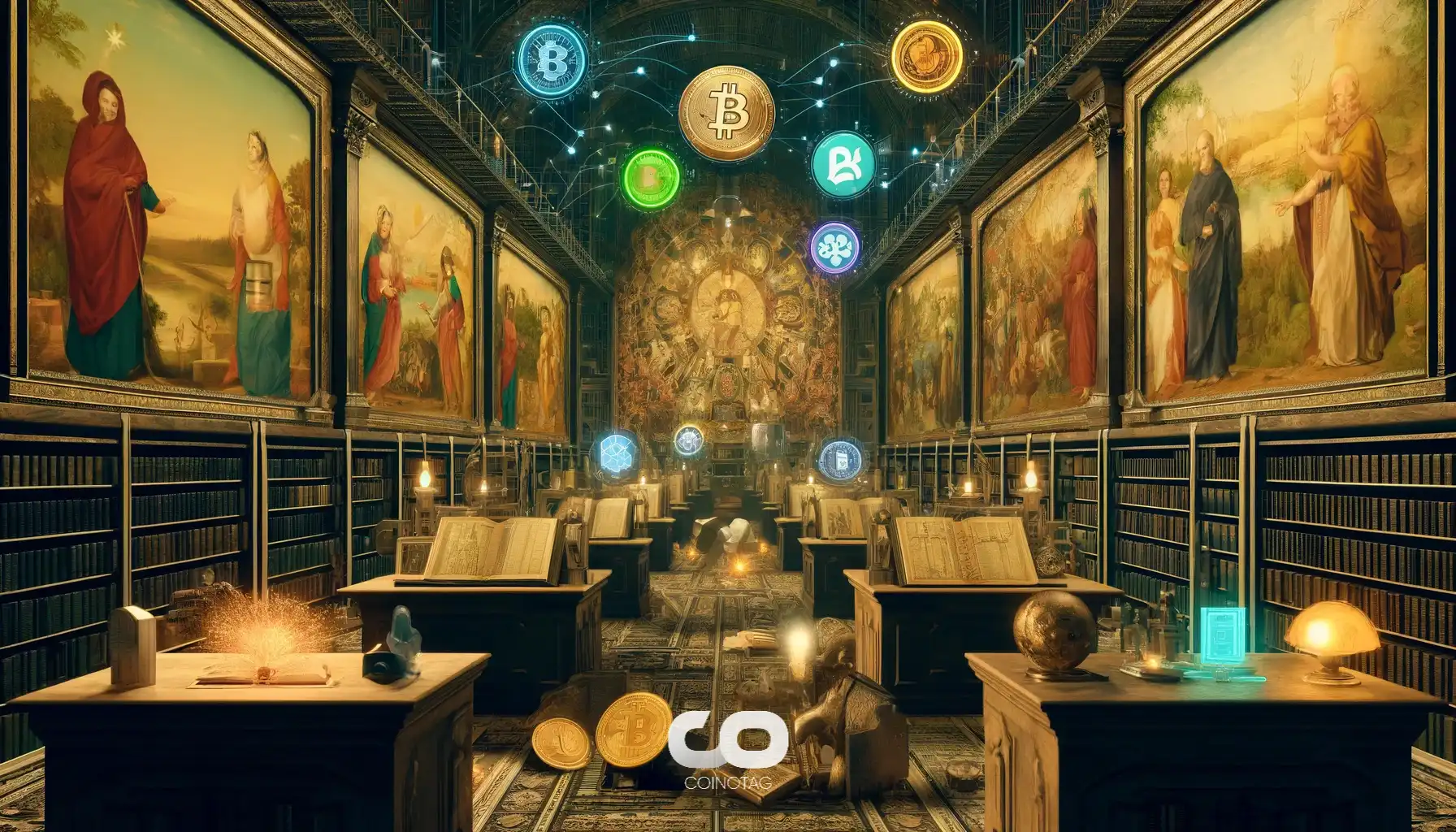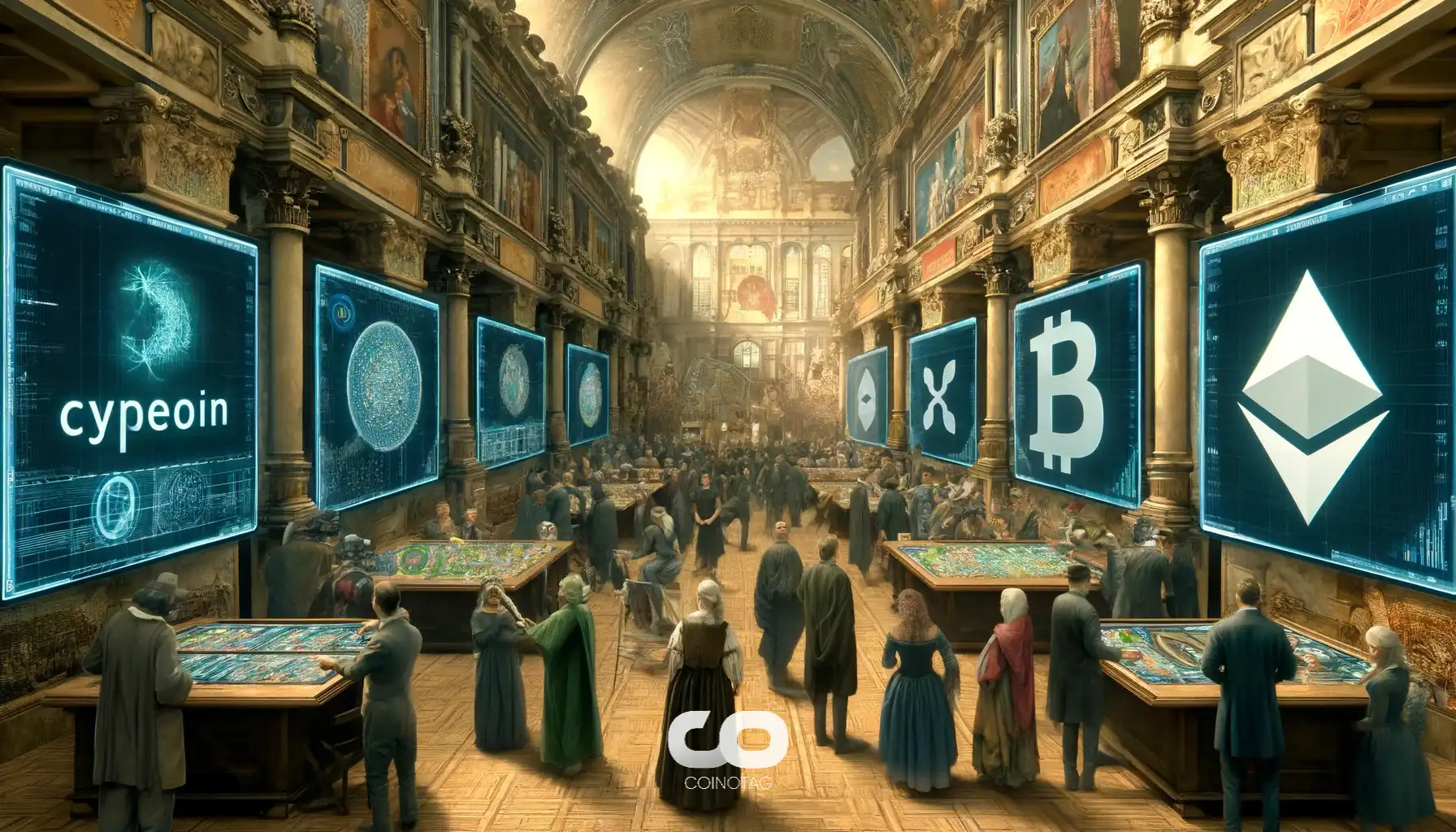1. What Is Quant (QNT)?


Quant launched in June 2018 with the goal of connecting blockchains and networks on a global scale, without reducing the efficiency and interoperability of the network. It is the first project to solve the interoperability problem through the creation of the first blockchain operating system.
To learn more about this project, check out our deep dive of Quant.
The project is built as an operating system distributed ledger technology— and Overledger Network — for connecting different blockchain networks. The project is billed as the first OS to be built for blockchains.
The main aim of Quant — using Overledger — is to bridge the gap that exists between different blockchains. The backbone of the project is the Overledger network, which Quant bills as the ecosystem on which the future digital economy ecosystem will be built.
Overledger allows developers to build decentralized multi-chain applications (known as MApps) for their customers. For developers to build a Mapp on the network, they must hold a certain amount of Quant tokens (QNT).
2. Who Are the Founders of Quant?


Gilbert Verdian, one of the founders of the Quant network, had the idea for the blockchain project while he was working in the healthcare sector. Verdian identified the importance of interoperability in ensuring that patients registered on different platforms are covered.
Verdian has over 20 years of industry experience in upgrading the security, technology and business strategies of businesses around the globe in order to achieve tangible results.
Prior to the Quant Network, Verdian served as the chief information security officer (CISO) of Vocalink, a Mastercard card company, the chief information officer of NSW Ambulance, the CISO of eHealth NSW, and the security lead of the Ministry of Justice, UK.
The second co-founder, Dr Paolo Tasca, is an entrepreneur, digital economist who specializes in distributed systems. Dr. Tasca has served as the special advisor on blockchain technologies for the EU Parliament, the United Nations and numerous central banks worldwide.
He is also co-author of several books on fintech and is the co-founder and governing board chair of Retail Blockchain Consortium.
3. What Makes Quant Unique?


Since the introduction of blockchain and the distributed ledger technology, innovators have found use cases in almost every known industry. However, there has been the problem of seamless interoperability between these projects. Quant was created to be the missing link between the “different” blockchains.
Quant’s operating system, Overledger, was designed to act as a gateway for any blockchain-based project to access all other blockchains. It also works in connecting an application to other applications in the same blockchain ecosystem, like Ethereum.
More than multiple blockchain interactions, Quant creates different layers for apps to interact at different levels. Quant has different layers for transactions, messaging, filtering and ordering, and an application for sharing and referencing identical messages related to other applications.
The Quant App Store has the ability to read and monitor transactions across multiple ledgers. Using Overledger, developers write smart contracts across a wide variety of chains including those that don’t support them — such as Bitcoin. Developers can also use the store to create and release multi-chain applications (MApps).
4. How Many Quant (QNT) Tokens Are There in Circulation?


QNT is a utility token. It is a method of payment for Quant services, particularly as a means for Overledger users to pay their fees.
Every client and developer must buy a licence and can use QNT to pay for transactions. This requires tokens to be locked up for 12 months. The cost of running the Gateways and performing read/write operations on Overledger requires the use of the QNT tokens.
The max supply of QNT tokens is set at 14,612,493 tokens. The QNT tokens were split in the following way:
* 9.9 million QNT tokens were sold to the public during the ICO;
* 2.6 million QNT tokens were assigned to the company reserve, to keep the project running;
* 1.3 million QNT tokens were reserved for the company founders;
* 651,000 QNT tokens were issued to the company advisors.
Currently, the circulating supply of the token is 12,072,738 QNT. The extra 2 million tokens are held by the company. These tokens are unlocked and could be sold or issued at any time.
5. How Is Quant Secured?


Overledger forms the backbone of the Quant Network. Overledger ensures communicability among DLT networks and interacts with different blockchains.
The Overledger Network includes gateways for linking different blockchains. Similar to Ethereum’s proof-of-stake blockchains, the Quant Network community is involved in handling treasury smart contracts.
The community handles QNT payments flowing from users to the gateways. They do this in a manner where people are held accountable to any observer.
6. Where Can You Buy Quant (QNT)?


Quant tokens can be purchased, sold, and traded on several exchanges, including;
Bilaxy
Bittrex
Bithumb Global
1inch Exchange
Uniswap (V2), and
Hotbit.
QNT can be traded against cryptocurrencies such as Bitcoin (BTC) and Ether (ETH), stablecoins such as Tether (USDT), and fiat currencies such as the euro.
Check out the real-time price of QNT live by downloading the CMC mobile app.
7. Related Pages:


Find out about Chainlink (LINK).
Find out about Polkadot (DOT).
Learn how to use Uniswap.
Read up to date crypto news on the CoinMarketCap blog.
8. What is Blockchain?


Blockchain is a decentralized and distributed ledger technology that securely records transactions across multiple computers in a verifiable and permanent way. It forms the underlying technology for cryptocurrencies like Bitcoin and enables transparency, security, and immutability.
9. What is Cryptocurrency?


Cryptocurrency is a digital or virtual form of currency that uses cryptography for security. It operates on decentralized networks, typically based on blockchain technology, and facilitates secure and transparent peer-to-peer transactions.
10. What is Bitcoin?


Bitcoin is the first and most well-known cryptocurrency, created in 2009 by an anonymous person or group known as Satoshi Nakamoto. It operates on a decentralized peer-to-peer network and is used for secure, transparent, and censorship-resistant transactions.
11. What is the difference between Bitcoin and Altcoins?


Bitcoin is the original and most widely recognized cryptocurrency, while altcoins refer to any other cryptocurrencies besides Bitcoin. Examples of altcoins include Ethereum, Ripple (XRP), Litecoin (LTC), and many others.
12. What is Staking?


Staking involves participants locking up a certain amount of cryptocurrency in a wallet to support the operations of a blockchain network. It is commonly associated with proof-of-stake (PoS) and delegated proof-of-stake (DPoS) consensus mechanisms, where participants receive rewards for helping secure the network.
13. How Can I Stake Cryptocurrency?


To stake cryptocurrency, you typically need to choose a platform or network that supports staking. Transfer your tokens to a compatible wallet, follow the staking instructions provided by the platform, and lock up the desired amount of cryptocurrency. Once staked, you may start earning rewards.
14. What Are Staking Rewards and How Are They Calculated?


Staking rewards are incentives provided to participants who lock up their cryptocurrency to support the network. The amount of rewards varies and is influenced by factors such as the network's inflation rate, the total amount staked, and the specific rules of the staking protocol.
15. Can I Unstake My Cryptocurrency at Any Time?


The ability to unstake and withdraw your cryptocurrency depends on the specific staking protocol and network. Some platforms may have lock-up periods or unbonding periods during which your staked tokens are inaccessible. Always check the terms and conditions of the staking service.
16. What are the Risks of Staking?


Staking comes with risks, including the potential loss of staked funds if a participant behaves maliciously or fails to fulfill their responsibilities. Market volatility can also impact the value of staked tokens. It's crucial to thoroughly research the staking protocol and understand the associated risks.
17. Can I Lose Money by Staking?


While staking is designed to be a rewarding activity, there is a risk of losing money, especially if the value of the staked cryptocurrency decreases or if the staking protocol encounters security issues. It's important to consider both the potential rewards and risks before participating in staking.





